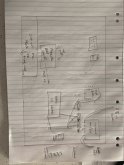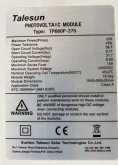Hi, 1st post. Love the YouTube videos. Will is an absolute legend. I do a fair bit of of road camping out of my 4X4. Im adding a roof top tent and upgrading the current solar set up. Need a little guidance. Here Goes:
current set up: 60watt panel on roof feeding to a basic solar regulator. Hooked up to the cars start battery, smart alternator in the car with a diode fuse which tricks the alternator to pump out 14.7 volts. From start batt, a 25amp DCDC charger through to my 100AH AGM auxiliary battery. This is all under the hood in the engine bay. And works well. Large cables running from the Auxiliary battery to the rear of the wagon. Connected to a fuse distribution box with 8 ports, 10 to 15amp fuses for various camp lights, 40ltr Engle fridge, USB and cig charger ports. Fridge is on 24/7, system has been running faultlessly for 2.5 years......but I wish to run a 2000w inverter for coffee machine and makita tool dual battery charger for work....... So:
275kw solar panel on roof top tent., want to run a victron 100/20 in place of the basic regulator. Keeping the DCDC charger and the wiring to the rear as is but adding solid terminals for the new inverter to connect to.
the questions I have are:
1. Can the victron 100/20 be mounted under the hood in the engine bay? Waterproof, Heat issues etc?
2. On the VicTron 100/20 it has Load terminals. If I connect these terminals to the roof top tent, will it provide power for the RTT at night from the auxiliary battery or power only when sun is shining?
3. Will it be an issue having the inverter 5meters away from the actual battery? Cables are 4 or 6 gauge, can’t remember, will have to check.
4. If point 3 is an issue what are the options? I can’t shift battery to rear and am really struggling with GVM limits so I don’t want to add a 3rd battery.
5. Due to said weight issues,the system needs to be able to accommodate lithium battery upgrade once the current batteries die.
Thanks so much, in advance for advice forth coming.
OH yeah , from West Lakes in South Australia
current set up: 60watt panel on roof feeding to a basic solar regulator. Hooked up to the cars start battery, smart alternator in the car with a diode fuse which tricks the alternator to pump out 14.7 volts. From start batt, a 25amp DCDC charger through to my 100AH AGM auxiliary battery. This is all under the hood in the engine bay. And works well. Large cables running from the Auxiliary battery to the rear of the wagon. Connected to a fuse distribution box with 8 ports, 10 to 15amp fuses for various camp lights, 40ltr Engle fridge, USB and cig charger ports. Fridge is on 24/7, system has been running faultlessly for 2.5 years......but I wish to run a 2000w inverter for coffee machine and makita tool dual battery charger for work....... So:
275kw solar panel on roof top tent., want to run a victron 100/20 in place of the basic regulator. Keeping the DCDC charger and the wiring to the rear as is but adding solid terminals for the new inverter to connect to.
the questions I have are:
1. Can the victron 100/20 be mounted under the hood in the engine bay? Waterproof, Heat issues etc?
2. On the VicTron 100/20 it has Load terminals. If I connect these terminals to the roof top tent, will it provide power for the RTT at night from the auxiliary battery or power only when sun is shining?
3. Will it be an issue having the inverter 5meters away from the actual battery? Cables are 4 or 6 gauge, can’t remember, will have to check.
4. If point 3 is an issue what are the options? I can’t shift battery to rear and am really struggling with GVM limits so I don’t want to add a 3rd battery.
5. Due to said weight issues,the system needs to be able to accommodate lithium battery upgrade once the current batteries die.
Thanks so much, in advance for advice forth coming.
OH yeah , from West Lakes in South Australia




